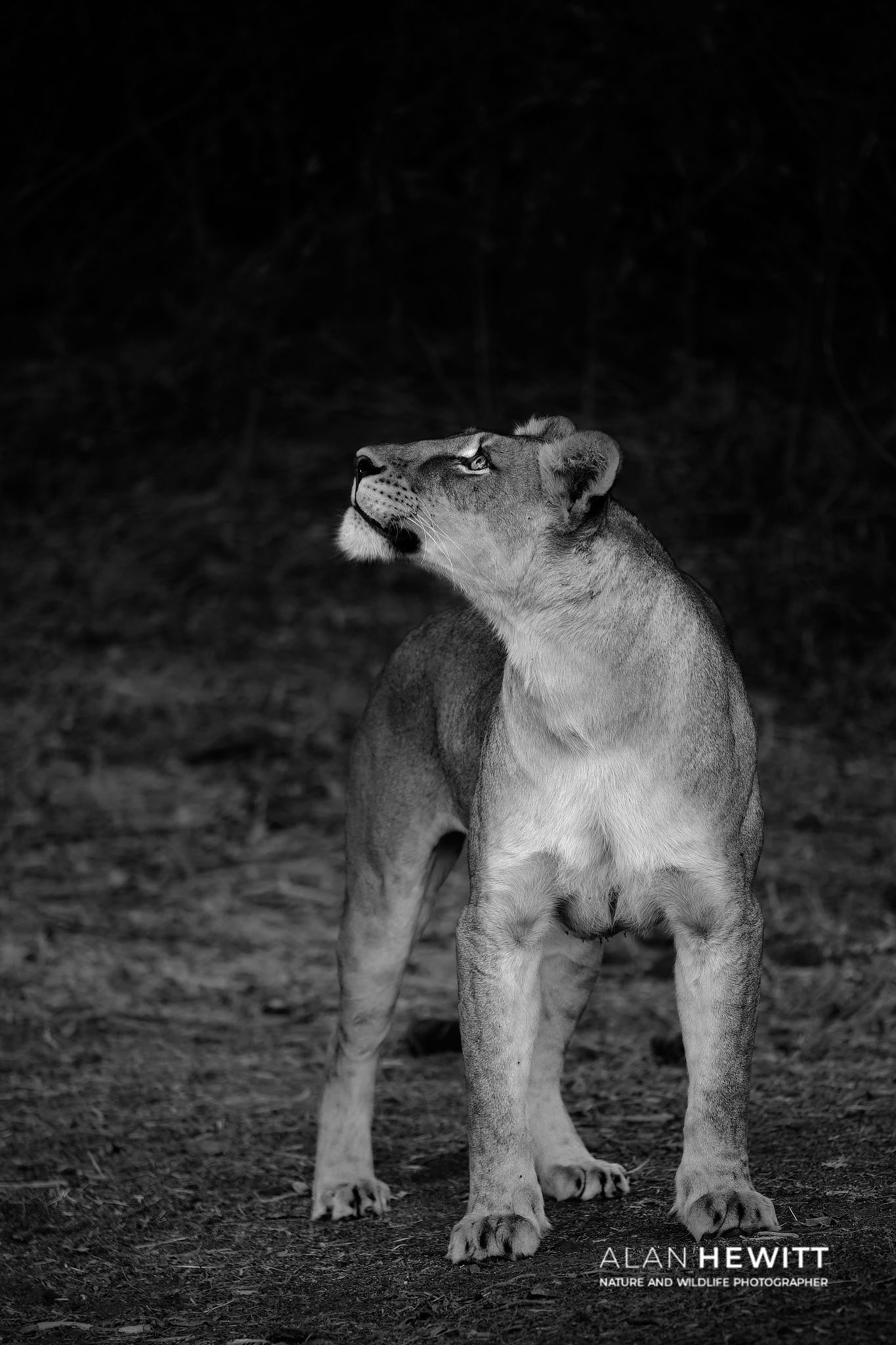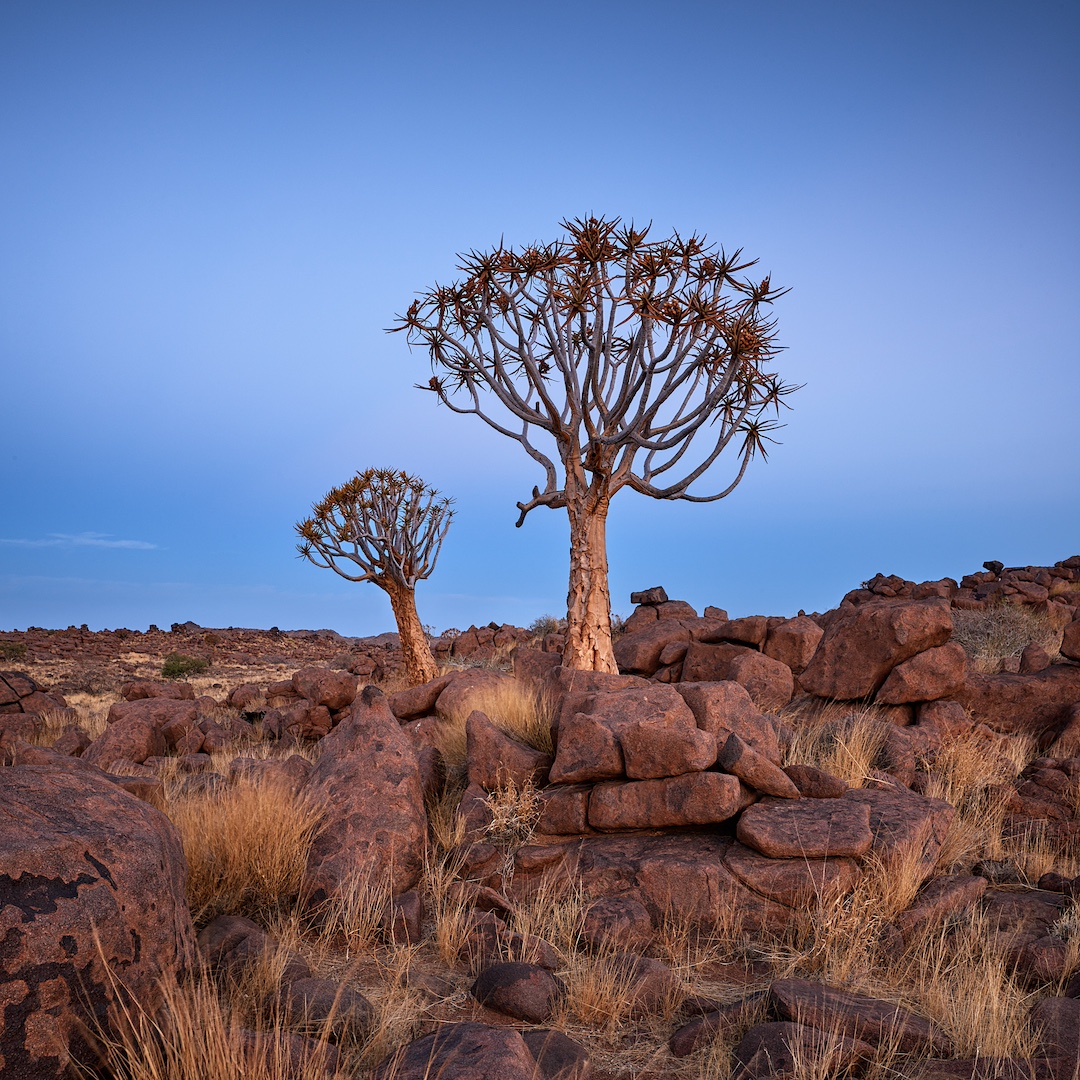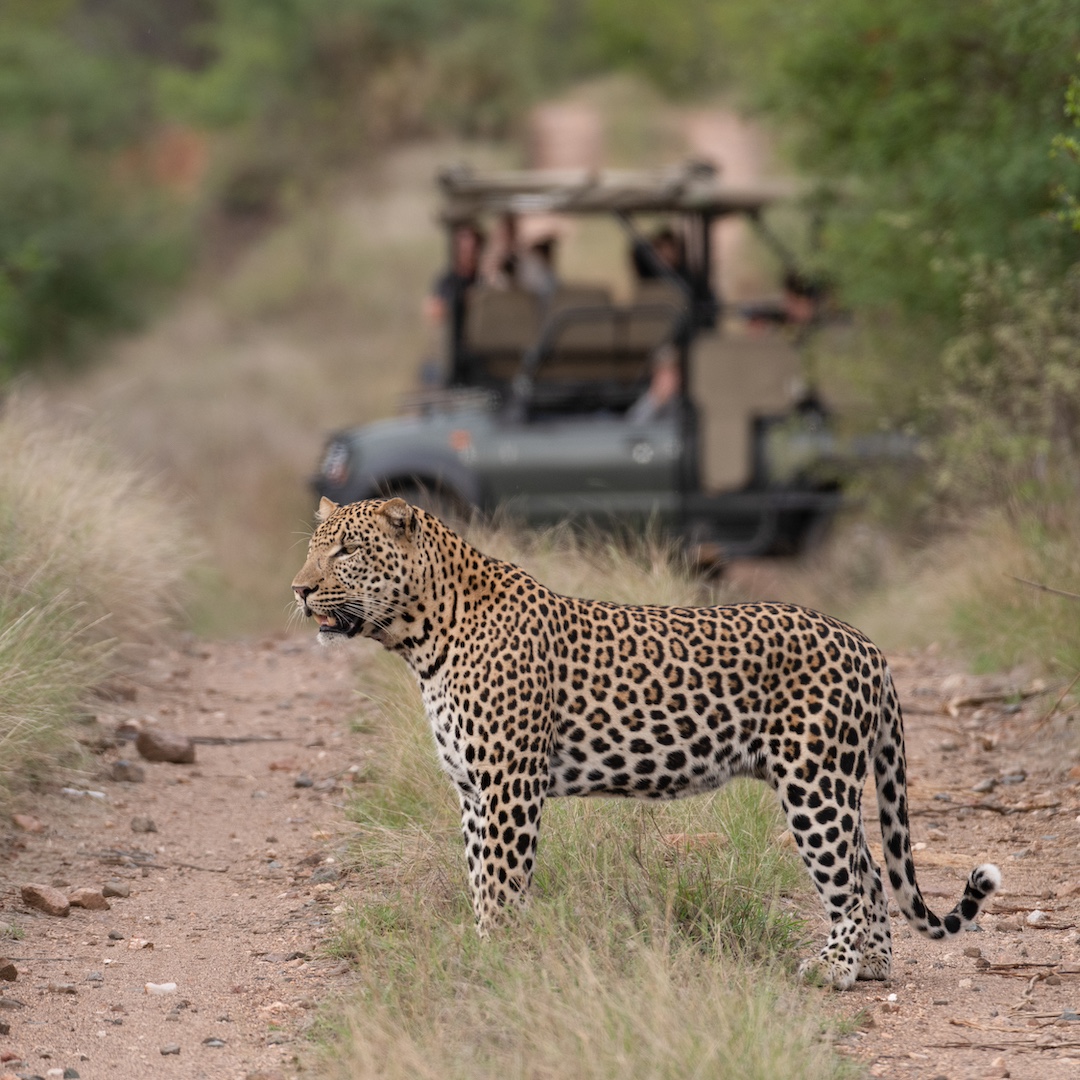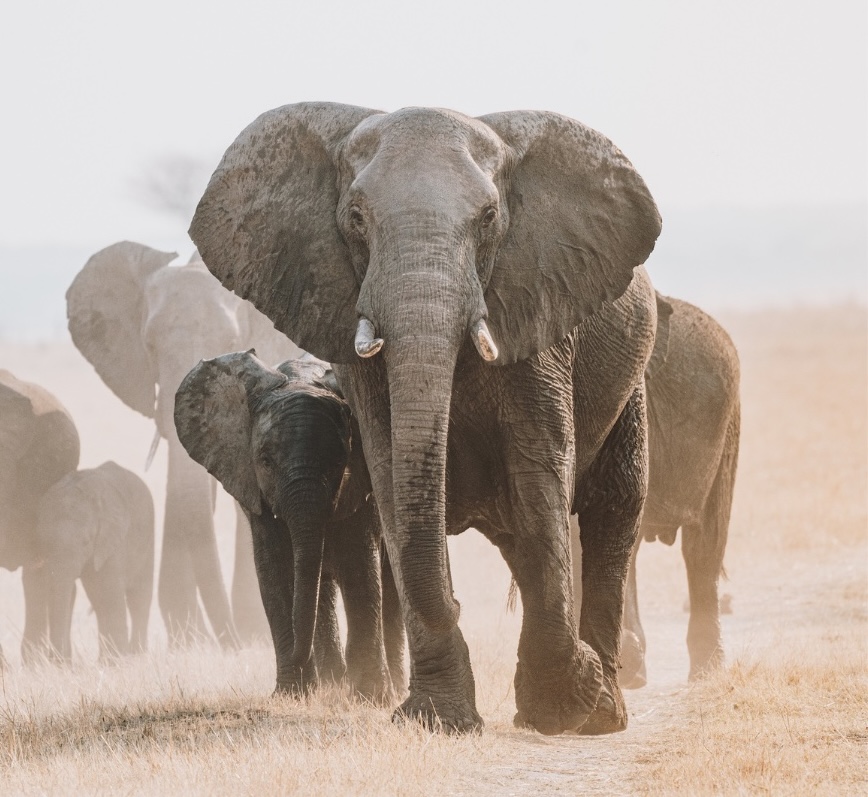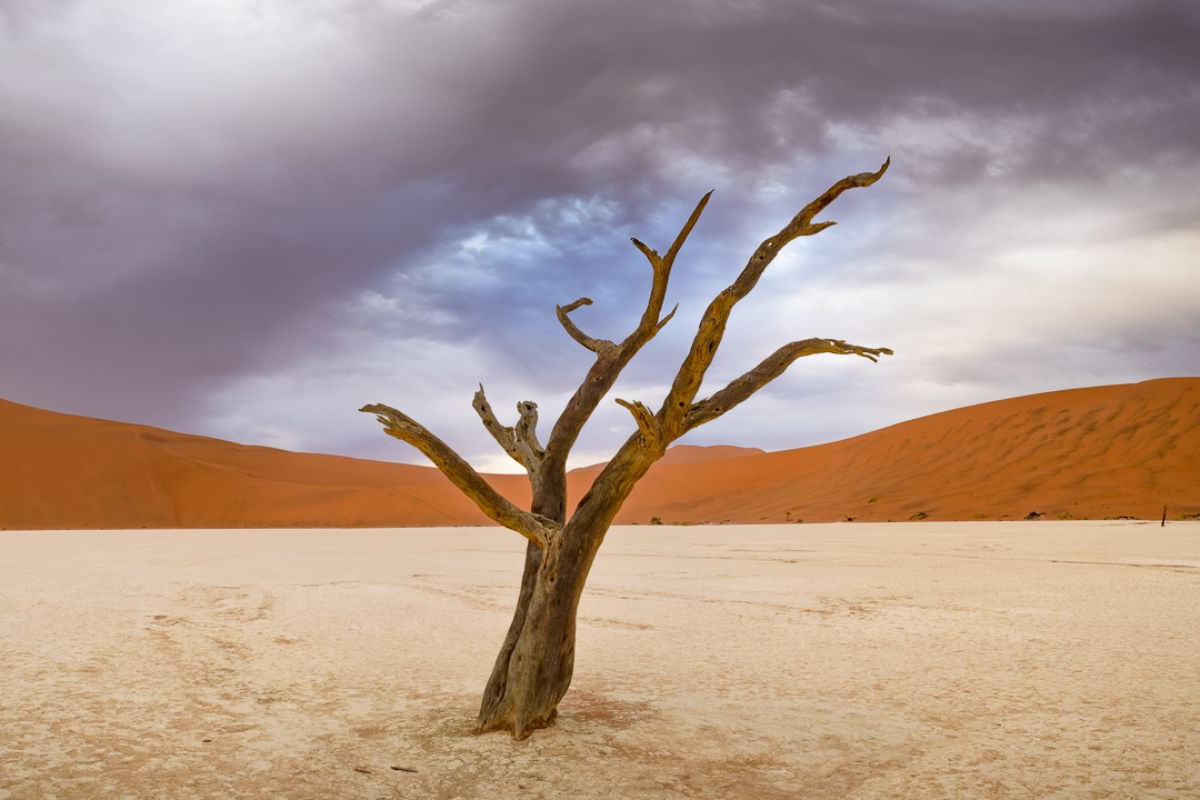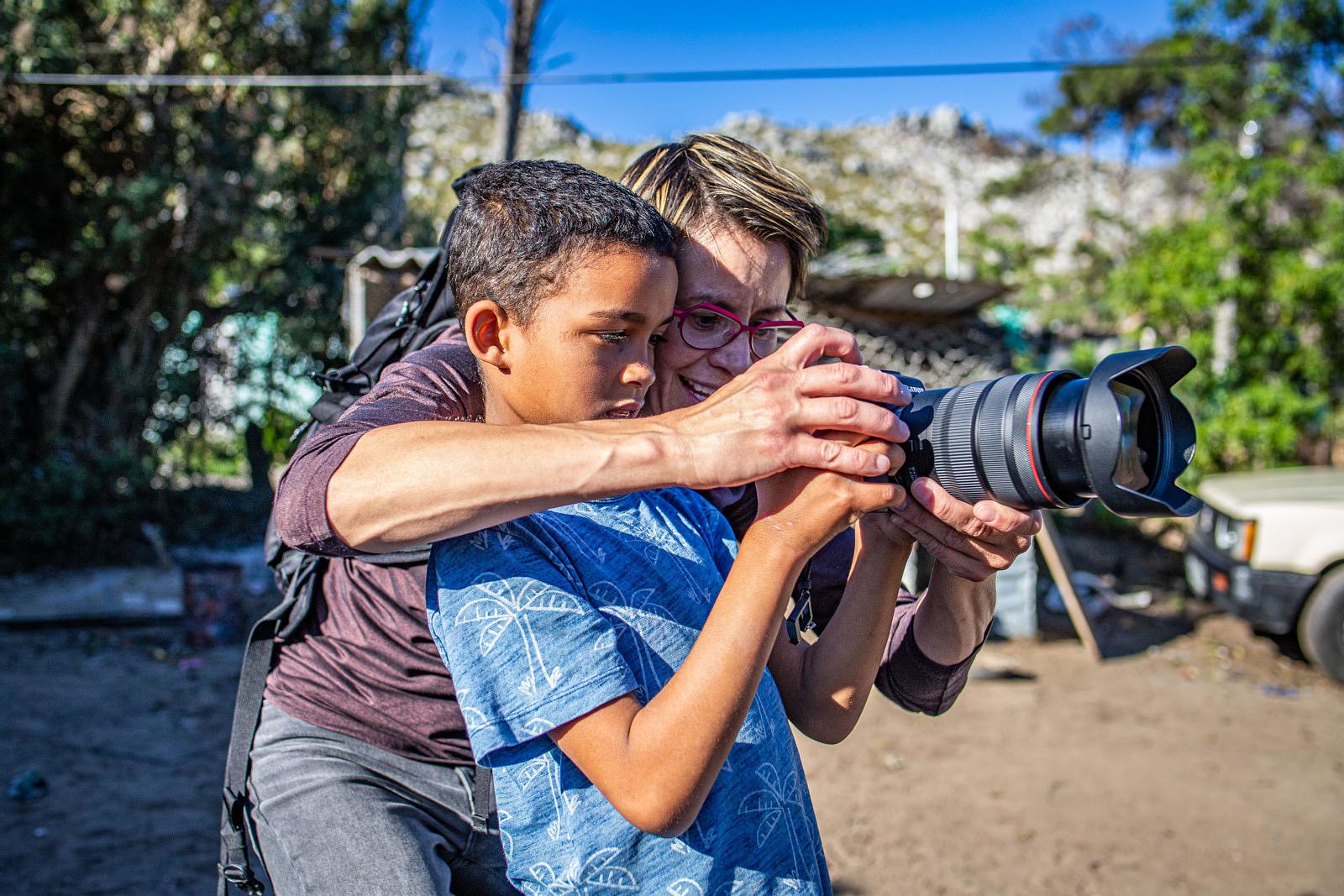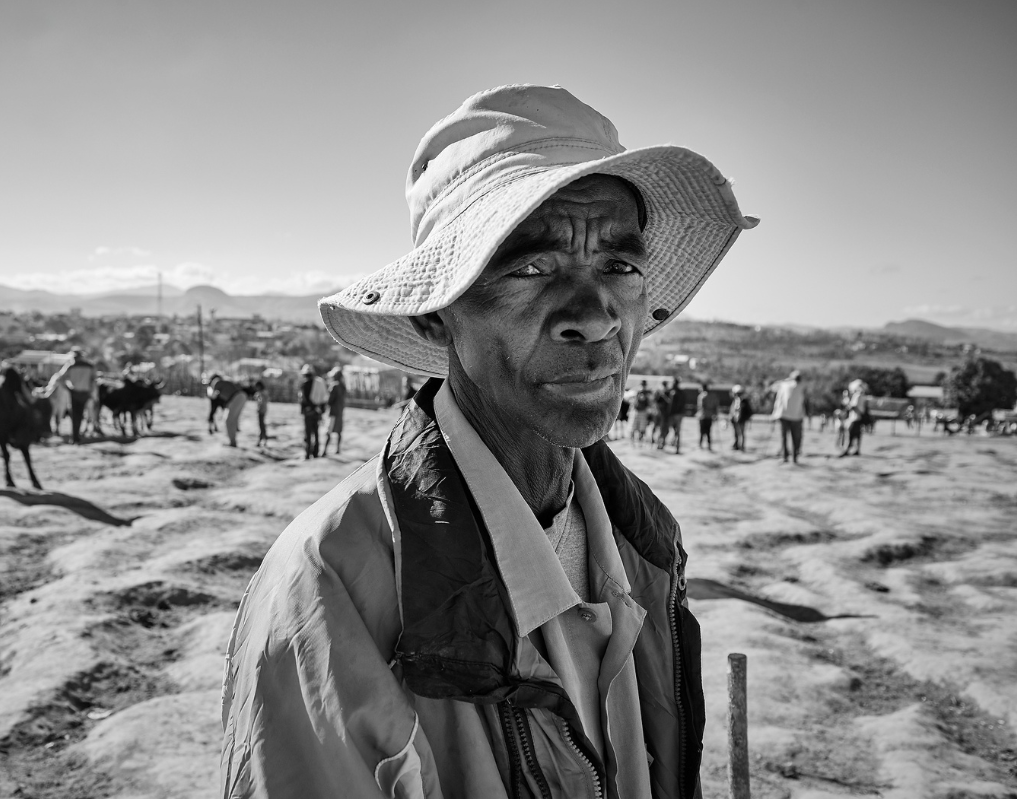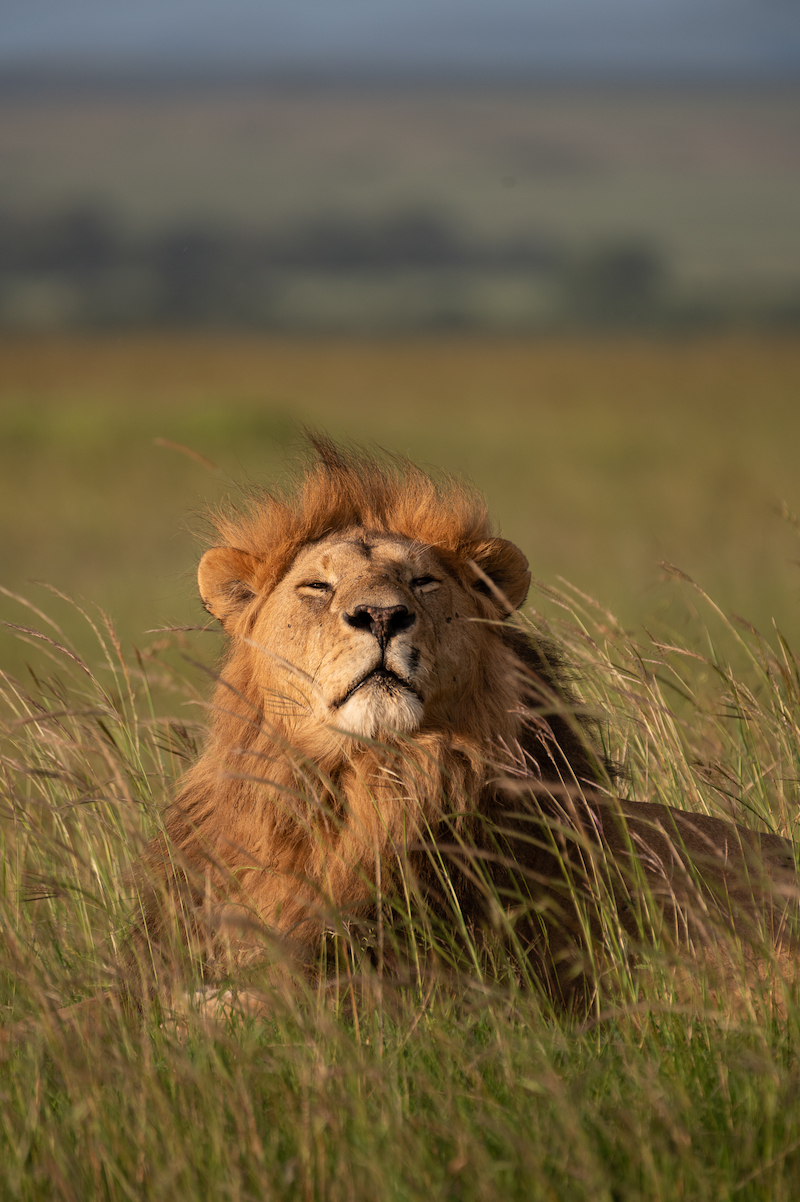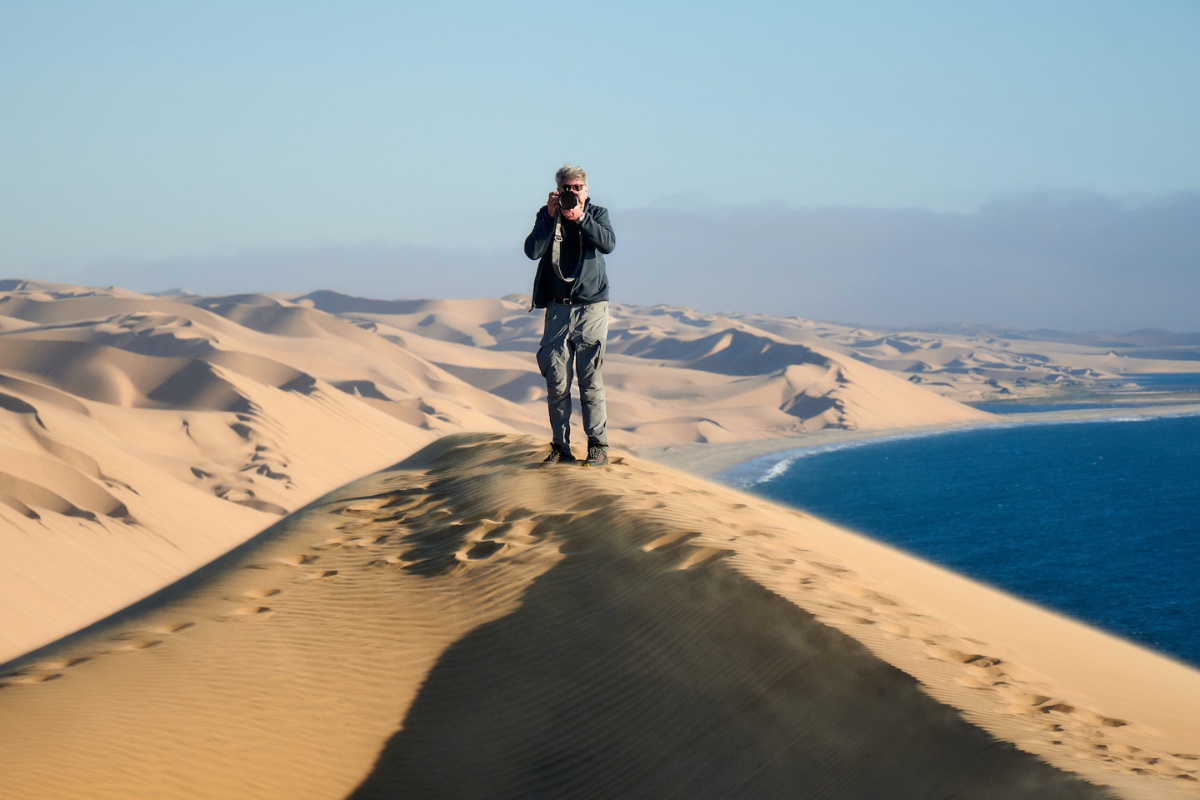As a wildlife photographer, I am often drawn to encounters which reveal a natural history story, perhaps moments where predator and prey interact, the dynamics of symbiotic relationships, or the instinct of survival and competition in the wild.
During one of our Botswana photography safaris in Tuli Block, we found ourselves in amongst such an encounter close to Serolo Camp by the Limpopo River. What began as a search for a leopard transformed into a photography experience with two predators, some technically challenging photography and a demonstration of the importance of fieldcraft.
The Fieldcraft
We had heard the leopard’s unmistakable “rasping” call throughout the evening before. Despite a multitude of leopard tracks around us, our morning search had been inconclusive. Some elephants amongst the beautiful green and orange mopane tree leaves provided an excellent distraction though! So, our late afternoon / evening drive began again with leopards in mind.
During a brief pause to photograph some female kudus, our Serolo guide Jou and I picked up on the sound of one of nature’s early warning systems, alarm calling impalas! It is an unmistakable sharp repetitive nasal snort or cough, and it is often a good indicator of a predator’s presence.
It is always beneficial to pause and listen closely to the sounds around you in the bush. Without this, it is easy to waste valuable time heading in the wrong direction. Together we listened and determined the most promising path forward, carefully scanning the terrain and trees that might be ideal for a leopard.
As we drew near, our expectations took an unexpected turn. Instead of our elusive leopard, a beautiful lioness came into our view close to a large tree. Still an incredible moment to capture! But just as we were moving into the strongest position to compose our photographs, a female leopard broke cover and darted towards the tree. In an amazing display of strength and agility she used her powerful limbs and strong claws to climb vertically up the tree trunk. She came to rest on a branch, also revealing an impala carcass which she had wedged in the branches earlier.
So, let’s read the “bush newsletter”! It was clear that the scent of the impala had attracted the lioness, who had the intention of scavenging. The leopard’s swift retreat into the safety of the tree canopy meant she had seen or smelled the presence of the lioness and wanted to be safely out of her reach and with her prey. The alarm calling from the impala herd was likely to be a reaction of seeing or smelling the lioness as she tracked the scent of the leopard’s prey.
The Technical Aspects of the Shot
As the afternoon turns to dusk and then evening, the African light fades quickly. After photographing the leopard beneath the dappled light from the tree’s foliage, I decided to reach for my Fujifilm XF50-140mm f/2.8 lens. The lioness was close to us, so I no longer needed the longer telephoto lens I had been using. The f/2.8 aperture was also useful in the fast-fading light. A higher ISO value also became increasingly essential to avoid losing sharpness. The lioness’ frustration made her quite animated at times as she looked up towards the leopard and impala.
There’s a fine line with ISO, though. Too high, and you may introduce excessive image noise. With this shot, I pushed the ISO as high as I felt comfortable, aiming to preserve as much clarity in the lioness’ gaze as possible.
Opening the aperture to f/2.8 allowed for more light to hit the sensor, helping counterbalance the poor lighting conditions. A wider aperture does have the side effect of narrowing the depth of field. Pretty much everything in photography from exposure to gear usually involves a trade-off! But here, I feel it enhances the effect. The background softened, isolating the lioness against the shadows of the foliage behind her. Her intentful gaze upward, hoping for scraps to fall from the leopard’s impala kill, is highlighted against a dark contrasting and blurred backdrop, drawing the viewer’s attention to precisely where I wanted it.
Why Black and White?
The lack of light after dusk often mutes colours, more so when we are working in shadows of foliage. I felt converting these photographs to black and white allowed me to enhance the impact by focusing on the contrasting textures—the fur, her intense eyes, and the intricate detail of her whiskers.
Without the distraction of colour, the eye is drawn into the elements of the image that convey her hope, patience, or perhaps the pathos of what will likely be a hopeless attempt at kleptoparasitism (feeding behaviour where one animal steals food caught by another animal).
The Experience
Observing and photographing a lion and leopard in such proximity to each other, each demonstrating their natural behaviours and the intricate balances and rivalries that play out constantly in the wild was an incredible and unusual experience for our guests (and me!).
To witness such a paradox was fascinating. The apex predator, grounded and it must be said, looking rather pathetic at times hoping to scavenge for scraps from the leopard which remained alert in the branches with her kill, wary of the competition below but clearly with all of the advantages.


